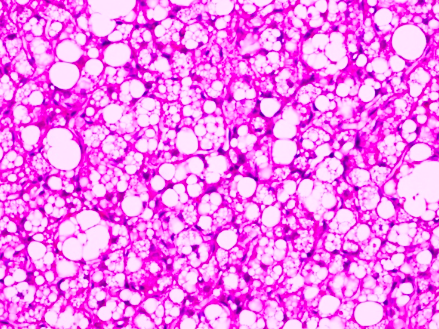Prof. Dr. rer. nat. Alexander Bartelt

Contact:
Prof. Dr. rer. nat. Alexander Bartelt
Ludwig-Maximilians-University Munich
Institute for Cardiovascular Prevention
Pettenkoferstraße 8a & 9
80336 München
Email: alexander.bartelt(at)med.uni-muenchen.de
Website
Research areas: metabolism, obesity and associated cardiovascular complications
Alexander Bartelt is DZHK Junior Research Group leader and Professor of Cardiovascular Metabolism at the Institute for Cardiovascular Prevention at Ludwig-Maximilians-University Munich. His research is dedicated to the understanding of basic molecular mechanisms underlying cellular stress in the metabolic syndrome.
Research focus
Obesity, diabetes, and atherosclerosis form a cluster of closely related chronic inflammatory diseases of metabolism. Alexander Bartelt’s research is dedicated to understanding the basic molecular and cellular principles of metabolic adaptation and how maladaptative derangements of these pathways contribute to metabolic disease.
For each cell, organ and whole organism it is critical to respond to increased metabolic demand, fine-tune metabolic rates but also to regenerate, heal or dispose of damaged cellular components in order to maintain homeostasis. In metabolic disease, this delicate homeostatic balance is disturbed by excess nutrients and accumulation of cellular waste, leading to a stress response that emanates from inside the endoplasmic reticulum, mitochondria and lipid droplets and is linked to the activation of inflammatory pathways. Alexander Bartelt’s goal is to identify novel pathways of metabolic homeostasis and determine their relevance for obesity, diabetes, and atherosclerosis. The Bartelt lab uses cell models, transgenic mice and in cooperation with clinical partners explores the translational relevance of their basic research for human metabolism and disease.

Major achievements and awards
- Karl Lohmann Award of the GBM
- European Atherosclerosis Society Young Investigator Award
- Norman Salem Jr. Early Career Award of ISSFAL
- Friedmund Neumann Award of the Ernst Schering Foundation
- ERC Starting Grant 2019
Key publications
Bartelt A, Widenmaier SW, Schlein C, Johann K, Goncalves RL, Eguchi K, Fischer AW, Parlakgül G, Snyder N, Nguyen TB, Bruns OT, Franke D, Bawendi MG, Lynes MD, Leiria LO, Tseng YH, Inouye K, Arruda AP and Hotamisligil GS. Brown adipose tissue thermogenic adaptation requires Nrf1-mediated proteasomal activity. Nat Med. 2018 Mar;24(3):292-303. PMID: 29400713
Widenmaier SB, Snyder NA, Nguyen TB, Arduini A, Lee GY, Arruda AP, Saksi JK, Bartelt A, Hotamisligil GS. Nrf1 is an ER membrane sensor that is central to cholesterol homeostasis. Cell. 2017 Nov 16;171(5):1094-1109. PMID: 29149604
Bartelt A, John C, Schaltenberg N, Berbée JF, Worthmann A, Cherradi ML, Schlein C, Julia Piepenburg J, Boon MR, Rinninger F, Heine M, Toedter K, Niemeier A, Nilsson SK, Fischer M, Wijers SL, van Marken Lichtenbelt W, Scheja L, Rensen PC, Heeren J. Thermogenic adipocytes promote HDL turnover and reverse cholesterol transport. Nat. Commun. 2017 Apr 19;8:15010. PMID: 28422089
Berbée JF, Boon MR, Khedoe PP, Bartelt A, Schlein C, Worthmann A, Kooijman S, Hoeke G, Mol IM, John C, Jung C, Vazirpanah N, Brouwers LP, Gordts PL, Esko JD, Hiemstra PS, Havekes LM, Scheja L, Heeren J, Rensen PC. Brown fat activation reduces hypercholesterolemia and protects from atherosclerosis development. Nat Commun. 2015 Mar 10;6:6356. PMID: 25754609
Bartelt A, Bruns OT, Reimer R, Hohenberg H, Ittrich H, Peldschus K, Kaul MG, Tromsdorf UI, Weller H, Waurisch C, Eychmüller A, Gordts PL, Rinninger F, Bruegelmann K, Freund B, Nielsen P, Merkel M, Heeren J. Brown adipose tissue activity controls triglyceride clearance. Nat Med. 2011 Feb;17(2):200-5. PMID: 21258337
Latest news
Tackling the Big Questions in Metabolism
09.03.2019. Prof. Dr. Alexander Bartelt studies metabolic processes in brown adipose tissue. He has now received a prestigious Starting Grant from the European Research Council (ERC) for a project on the role of muscle cells in metabolic homeostasis. Read on
